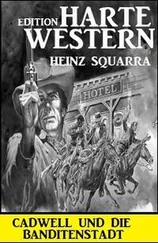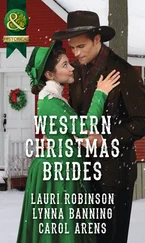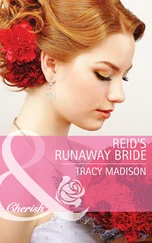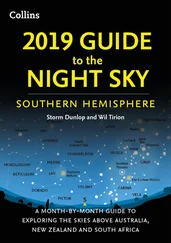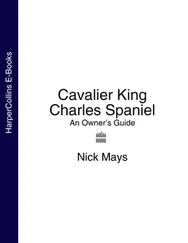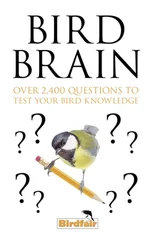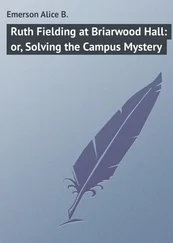Charles Reed - Western Bird Guide
Здесь есть возможность читать онлайн «Charles Reed - Western Bird Guide» — ознакомительный отрывок электронной книги совершенно бесплатно, а после прочтения отрывка купить полную версию. В некоторых случаях можно слушать аудио, скачать через торрент в формате fb2 и присутствует краткое содержание. Жанр: foreign_antique, foreign_prose, на английском языке. Описание произведения, (предисловие) а так же отзывы посетителей доступны на портале библиотеки ЛибКат.
- Название:Western Bird Guide
- Автор:
- Жанр:
- Год:неизвестен
- ISBN:нет данных
- Рейтинг книги:3 / 5. Голосов: 1
-
Избранное:Добавить в избранное
- Отзывы:
-
Ваша оценка:
- 60
- 1
- 2
- 3
- 4
- 5
Western Bird Guide: краткое содержание, описание и аннотация
Предлагаем к чтению аннотацию, описание, краткое содержание или предисловие (зависит от того, что написал сам автор книги «Western Bird Guide»). Если вы не нашли необходимую информацию о книге — напишите в комментариях, мы постараемся отыскать её.
Western Bird Guide — читать онлайн ознакомительный отрывок
Ниже представлен текст книги, разбитый по страницам. Система сохранения места последней прочитанной страницы, позволяет с удобством читать онлайн бесплатно книгу «Western Bird Guide», без необходимости каждый раз заново искать на чём Вы остановились. Поставьте закладку, и сможете в любой момент перейти на страницу, на которой закончили чтение.
Интервал:
Закладка:
Nest.– Of seaweed on ledge of sea cliff, eggs three in number, in shades of light drab to brown, spotted with brown and black.
Range.– Arctic regions, in winter south to San Francisco Bay.
GLAUCOUS-WINGED GULL
The primaries are the same color as the mantle on this gull except that the primaries are tipped with white. They breed in large numbers both on the rocky cliffs and on the low sandy islands of the Aleutians. On the cliffs large nests of seaweed are built, while on the low sandy islands no attempt is made at nest building.
Nest.– Two or three eggs are the usual complement, of a greenish brown ground color with various shades of brown spots, most thickly covered on the larger end (2.75 × 2.05).
Range.– North Pacific coast, breeding from British Columbia northwards, and wintering to southern California.
SLATY-BACKED GULL
This large gull, with its almost pure white head and neck and slaty colored back, is one of the prettiest. They often nest in colonies with other gulls, building their small mounds of seaweed on the higher parts of the islands.
Nest.– Usually contains sets of two or three grayish colored eggs, spotted with dark brown and lavender (2.90 × 2.00).
Range.– Northern Pacific and Arctic oceans.
WESTERN GULL
This bird is the most southerly distributed of any of the large Gulls, and can be seen about the harbors of California at all seasons of the year. They are great thieves, robbing the Murres and Terns wherever eggs are left unprotected, and are the greatest enemy that the Murres have to contend with.
Nest.– Their nests are made up of weeds and grass, and the full set contains three eggs of grayish brown spotted with dark brown, showing the usual variation found in color in the Gulls’ eggs (2.75 × 1.90).
Range.– Pacific coast, breeding from southern California to British Columbia.
HERRING GULL
These Gulls nest in colonies in favorable localities, usually on the ground, sometimes making a bulky nest of seaweed quite a distance from the water. A few pair nest on the islands of some of the inland lakes and it is not uncommon to see nests built in low trees ten or fifteen feet from the ground.
Nest.– They lay three eggs of a grayish brown color spotted with black and brown.
RING-BILLED GULL
A small Gull with light gray mantle, black primaries with white tips and always to be identified in the breeding season by the black band around the middle of the greenish yellow bill. They nest in large colonies on the islands in the interior of the country. They frequent lakes and ponds at high altitudes in Colorado. Thousands of them breed about the lakes of the Dakotas and northward.
Nest.– Commonly lay three eggs, placing them in a slight hollow on the ground generally on the grassy portion of some island (2.80 × 1.75).
Range.– North America. On the Pacific coast from Lower California to British Columbia.
CALIFORNIA GULL
This is a slightly smaller Gull than the Cal. Herring Gull HERRING GULL 51. Larus argentatus. 24 inches These Gulls nest in colonies in favorable localities, usually on the ground, sometimes making a bulky nest of seaweed quite a distance from the water. A few pair nest on the islands of some of the inland lakes and it is not uncommon to see nests built in low trees ten or fifteen feet from the ground. Nest. – They lay three eggs of a grayish brown color spotted with black and brown.
and the primaries are grayish instead of black. Bill yellow, with red spot near end of lower mandible; feet greenish yellow.
Nest.– Abundantly around Great Salt Lake, placing their nests generally upon the bare ground. Three or four eggs constitute a set, and they are the usual color of the Gulls’.
SHORT-BILLED GULL
The short-billed Gull or American Mew Gull is much like the European variety. Adults in breeding plumage; mantle pearly gray; rest of white; outer primary nearly black with a white spot at the end. Bill, feet and legs greenish.
Nest.– On islands in the lakes and rivers of Alaska. The nest is generally made of moss, grass and weeds and placed on the ground.
Range.– Breeds from the interior of British Columbia to Alaska. Winters in the south to Lower California.
HEERMANN GULL
A handsome little species, often called the White-headed Gull. In summer the entire head, neck and throat are white, with a red bill and legs. The body color shades abruptly from the neck into slaty, both the upper and under parts. The primaries and tail are black.
Nest.– Similar to others of the Gull family, with three eggs greenish drab in color marked with brown, black and lilac (2.45 × 1.50).
Range.– Pacific coast of North America.
BONAPARTE GULL
In summer, tip and outer web of outer primaries black; inner web and shaft white, with a black bill. The head and neck are gray; while in winter the head is white with gray spots back of the eyes. Young birds have the back mixed with brownish and the tail with a band of black near the tip. They are rarely found in the U. S. with the black hood.
Nest.– They nest in great numbers in the marshes of the northwest. The nests of sticks and grass are placed on the higher parts of the marshes and the usual complement of three eggs is laid. The eggs are grayish to greenish brown, marked with dark brown spots (1.90 × 1.30).
SABINE GULL
A handsome bird, having the slaty hood bordered behind with a black ring; the primaries black, white tipped, and the tail slightly forked. In winter the head and throat white with the back of the neck dusky.
Nest.– They breed abundantly on the marshes of northern Alaska and Greenland. The two or three eggs are greenish brown in color and marked with dark brown (1.75 × 1.25).
CASPIAN TERN
The largest and most beautiful of the Tern family. The bill is large, heavy and bright red. The crest with which this species is adorned is black. The mantle is pearl color and the breast is white. Winter birds have the crown mixed with white, and the young are blotched with blackish in the wings and tail.
Nest.– They sometimes nest in large colonies and then again only a few pair will be found on an island. Eggs vary from gray to greenish buff, marked with brown and lilac. The two eggs usually being laid in a hollow in the sand.
Range.– North America, breeding from the Gulf Coast and Lower California to the Arctic regions.
ELEGANT TERN
In the breeding plumage the under parts of the Terns are tinged with rosy, which probably first gave the birds their name.
Читать дальшеИнтервал:
Закладка:
Похожие книги на «Western Bird Guide»
Представляем Вашему вниманию похожие книги на «Western Bird Guide» списком для выбора. Мы отобрали схожую по названию и смыслу литературу в надежде предоставить читателям больше вариантов отыскать новые, интересные, ещё непрочитанные произведения.
Обсуждение, отзывы о книге «Western Bird Guide» и просто собственные мнения читателей. Оставьте ваши комментарии, напишите, что Вы думаете о произведении, его смысле или главных героях. Укажите что конкретно понравилось, а что нет, и почему Вы так считаете.



